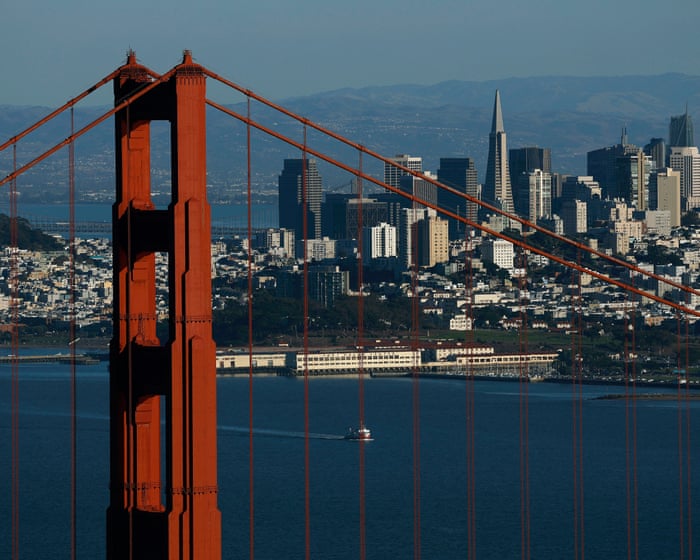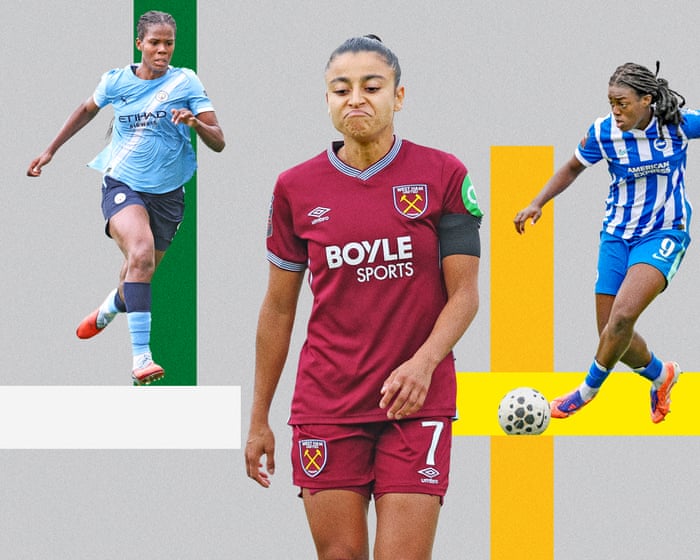You don’t hear much about the featherless chicken anymore, and on second thought, that’s probably a good thing. The idea was straightforward: feathers are a hassle in poultry farming, adding significant costs in labor and processing. By breeding genetically modified, feather-free chickens, the industry could save billions. You might as well try to convince the chicken to eat sage and onion stuffing—or even baste itself in lemon butter from time to time.
But when scientists at the Hebrew University of Jerusalem introduced the featherless chicken in 2002, it never took off for one simple reason: it looked downright bizarre. It turned out that feathers, while not part of the meal, provided essential context. Most importantly, people didn’t want to see their Sunday roast walking around in front of them. “It’s a normal chicken,” argued geneticist Avigdor Cahaner, “except for the fact it has no feathers.”
Right now, Michael Johnson likely has more urgent concerns than the history of genetically modified poultry. But as he fights to save his Grand Slam Track project—currently on the brink of collapse and being chased by unpaid creditors in Lycra—the story of the featherless chicken serves as a cautionary tale about the risks of stripping away too much.
Michael Johnson admits Grand Slam Track is on hold until 2025 debts are paid.
Grand Slam Track seemed brilliant on paper. Take a beloved but struggling sport, trim away all the extras—discus, racewalking, triple jump, relays—and repackage it for a new audience. By distilling athletics down to its purest form—running—Johnson believed he could unlock new revenue and attract casual fans, turning his venture into what he called “the Formula One of athlete racing.”
At first, GST generated plenty of excitement. Johnson announced an initial funding round of $30 million (£23.5 million), over $12.5 million in prize money, and broadcast deals with NBC and TNT Sports. The world’s top runners—Sydney McLaughlin-Levrone, Gabby Thomas, Josh Kerr—would be flown in and treated to luxury accommodations. The first event was set for Jamaica in early April.
That’s when Grand Slam Track’s grand plans met reality. The National Stadium in Kingston was nearly empty on opening weekend. Many races lacked intensity or drama. The men’s 5,000 meters was run at a painfully slow pace, with the winning time almost 90 seconds slower than the Paris Olympic final. After all, why push the pace when everyone’s getting a hefty check afterward? Well, about that…
The athletes went home and waited for their payments. The payments never came. The tour moved to Miami in May, where crowds were slightly better and the event organization tighter. By the Philadelphia meet, a three-day event had been cut to two days, and the two distance races reduced to one. Social media posts kept rolling. “So dope!! Pls pay me,” Thomas commented under a TikTok video. But the league, which promised transparency, fell into stubborn silence.
Behind the scenes, Grand Slam Track was in disarray. A major investor pulled out just days after seeing the Kingston event, leaving an eight-figure hole in the budget. The Los Angeles event was canceled, most athletes haven’t been paid for Miami or Philadelphia, and no one knows when—or if—they will be. Johnson insists Grand Slam Track will return in 2026, though whether any runners will want to participate remains to be seen.
Michael Johnson congratulates Marco Arop for winning the men’s short distance category at the Philadelphia Grand Slam Track meeting. Photograph: Artur Widak/Anadolu/Getty Images
So where…How did it all go wrong? Within the sport, several credible theories have emerged. There was a lack of genuine household names—no Noah Lyles, Jakob Ingebrigtsen, Keely Hodgkinson, Karsten Warholm, or Femke Bol. There was also a misguided focus on the North American market, and too much spending on prize money rather than incentives like world record bonuses. Commentators often insisted that times didn’t matter, which was an interesting angle, to be sure.
But Grand Slam Track’s biggest selling point was also its greatest weakness. There’s a reason digital radios are designed to look like retro analogue ones, why ebooks mimic the feeling of turning a page, and why Christmas crackers come in colourful cardboard instead of just being an exploding stick. Sometimes, substance matters less than texture and feel. The consumer experience has to be sensory, or it’s nothing.
Field events might seem unnecessary, but without them, the whole product falls apart. The essential appeal of elite athletics lies in its sprawling, village-fair atmosphere—the moments in between the action, the overlapping events, the parts you can usually ignore until suddenly you can’t. Think of Mondo Duplantis going for another world record, or the epic heptathlon duels between Nafi Thiam and Katarina Johnson-Thompson.
Consider Bob Beamon, Yelena Isinbayeva, Daley Thompson, Jan Zelezny, the chaos of the 4x400m relay, a high jumper waiting for the steeplechase to pass, or the geometric beauty of a perfectly thrown hammer. Think of javelin throwers from South Asia, triple jumpers from Latin America, the incredible variety of body types, and the sense that this is ultimately a celebration of humanity. Strip all that away, and nothing else makes sense. Johnson was trying to sell a plucked chicken. You’re supposed to focus on the meat, but you can’t help noticing what’s missing.
Other sports have learned these lessons to varying degrees. The Tour de France markets itself on mountain duels, but without sprint stages, subplots, rest days, and daring breakaways, it would just be the world’s toughest and most scenic spin class. Cricket becomes less interesting the shorter it gets, relying more on gimmicks and flashy tactics. Rugby sevens is intense and thrilling, but it can’t compare to the depth of an epic Test match.
Of course, athletics is still ripe for disruption and innovation. While Johnson’s idea may have failed, others will keep trying. Alexis Ohanian’s women-only Athlos will hold its second event in New York this October. World Athletics has created its own Ultimate Championship, set to debut in Budapest next September. But despite the lavish prize money, none of this really addresses the core question: who is actually asking for any of this? Who, besides the athletes themselves, is desperately demanding more athletics?
Perhaps Johnson was always the wrong person to answer that question. As a brilliantly efficient runner and then a straightforward pundit, his greatest strength has always been super-efficiency—the ability to ruthlessly strip away what doesn’t matter and get straight to the heart of the task. But maybe that approach missed the point.Mastering a sport and marketing it require very different skills. The road to widespread admiration is full of poor trade-offs and misguided compromises. And there will always—always—be some things that simply cannot be changed or sacrificed.
Frequently Asked Questions
Of course Here is a list of FAQs based on Jonathan Liews argument about Michael Johnsons Grand Slam Track
General Beginner Questions
1 What is Michael Johnsons Grand Slam Track
Its a new professional track and field league founded by the Olympic champion designed to feature elite athletes in a highstakes teambased competition format
2 What is Jonathan Liews main criticism of it
Liew argues that the league feels too corporate and sterile lacking the passionate local and communitydriven atmosphere that makes traditional track meets special
3 What does grassroots communitydriven atmosphere mean in this context
It refers to the feeling at local meets volunteers families cheering young aspiring athletes watching their heroes up close and a sense of connection to a place and its people
4 So is the new league a bad thing
Not necessarily It aims to make track more professional and financially rewarding for athletes The criticism is that in pursuing that goal it may lose the sports soul and charm
Advanced Detailed Questions
5 How does Grand Slam Tracks structure differ from a traditional meet
Its built like a franchise league with citybased teams owned by investors Traditional meets are often organized by athletic associations or clubs with deep local ties
6 What specific elements create this corporate feeling Liew mentions
Likely factors include a focus on sleek TV production heavy branding a controlled stadium environment and a product designed for a global broadcast audience rather than a local live crowd
7 Could this model actually help the sport by making it more profitable
Thats the goal By creating a more marketable product it could attract bigger sponsors and TV deals ultimately leading to higher pay for athletes which is a major problem in track and field
8 What is the risk of losing the community aspect
The risk is that the sport becomes disconnected from its base The next generation of athletes often discovers their passion by experiencing the excitement of local meets A purely televised eliteonly product might not inspire that same connection
9 Cant both models exist sidebyside
Ideally yes The Grand Slam could serve as a lucrative pinnacle for pros while local and national meets continue to foster community engagement and develop new talent The



